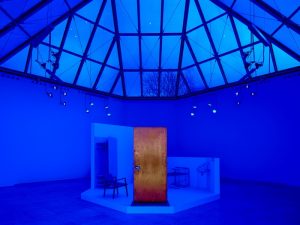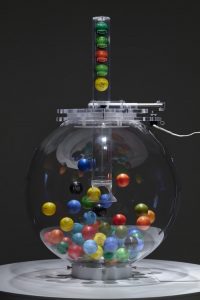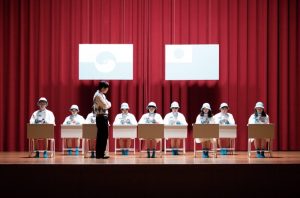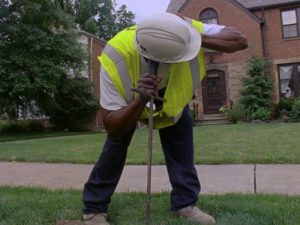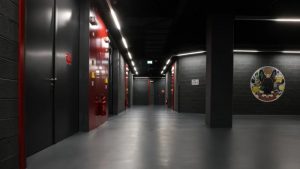You know how some charmless and dull cities on the continent pride themselves with the title of “Europe’s best kept secret”? I bet Luxembourg wouldn’t dare to pretend to the label. The place is as charmless as a man wearing Ugg boots. Don’t even get me started on their food. Yet, i keep going again and again to Luxembourg because of its edgy and exciting art offer. My last visit was spurred by the second chapter of the exhibition sk-interfaces at Casino Luxembourg.
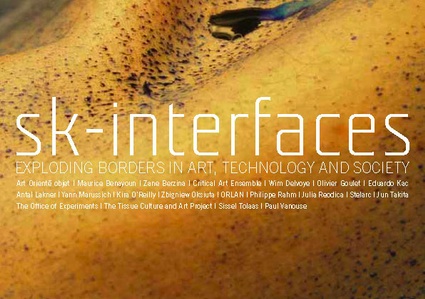
Yes, i had already seen sk-interfaces. Exploding Borders in Art, Technology and Society at FACT in Liverpool but the Luxembourg version, i was told by friends, is bigger, bolder and even better than the first one. They were right. Several pieces have been added to the show. The performances are extremely well documented and there is a corner to watch videos. The space itself is kinder to the artworks. There’s even extra drama as the poor Victimless Leather (A prototype of Stitch-less Jacket grown in a Technoscientific ‘Body‘) garments had caught some disease on their way to the Casino and were slowly eaten by decay.
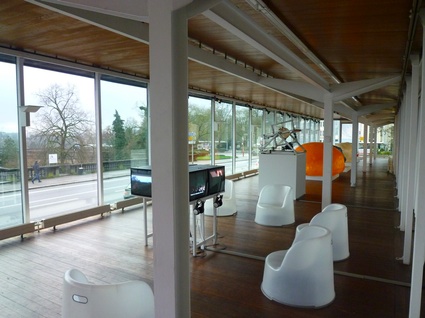
It’s as if the first exhibition in Liverpool had been a superb rehearsal of this one.
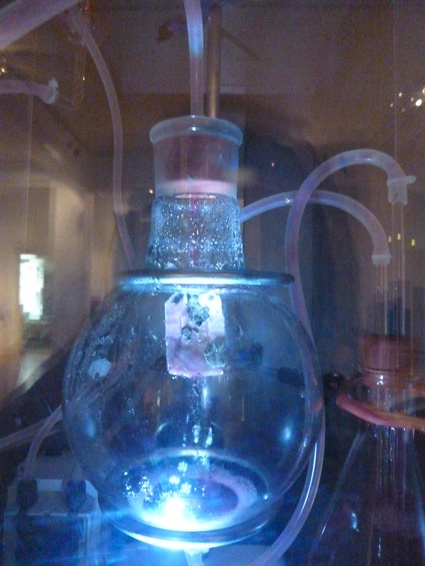
Curated by Jens Hauser, the exhibition sk-interfaces presents some 20 artists who question the ways in which today’s techno-sciences alter our relation to the world: digital technologies, architecture, tissue cultures, transgenesis, self-experiments or telepresence – the artists appropriate these methods and explore the permeability between disciplines and between art and science. Their interfaces connect us with different species, destabilise our definition of being human today and reflect on the question of satellite bodies. Oscillating between the physical and the metaphorical, the political and the meditative, the utopias and the dystopias, the exhibition invite us to reflect on how we are perceiving the shifts brought about by technologies, some of which we might not be as familiar with as we ought to.
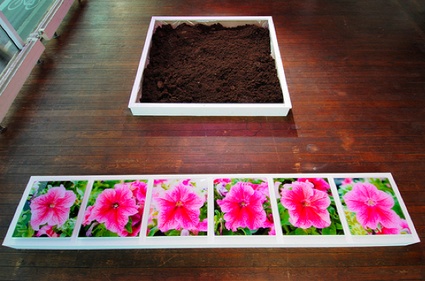 Eduardo Kac, Natural History of the Enigma, 2009. Installation view at Casino Luxembourg. Photo credit: Axel Heise
Eduardo Kac, Natural History of the Enigma, 2009. Installation view at Casino Luxembourg. Photo credit: Axel Heise
One of the best surprises for me was to discover that the Critical Art Ensemble was not only showing Immolation but also a video i was very curious about: Marching Plague (little did i know, until the press person at Casino told me so, that the video is also available for online viewing.)
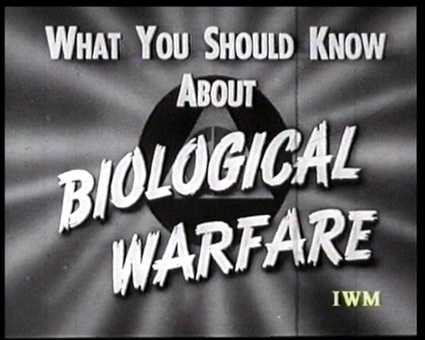 Critical Art Ensemble, Marching Plague, 2004, video still
Critical Art Ensemble, Marching Plague, 2004, video still
Critical Art Ensemble‘s film puts into a highly skeptical perspective UK-US bioweapons research and the paranoia surrounding bioterrorism. In the video, the CAE and some volunteers follows the steps of Operation Cauldron, a series of biological warfare trials conducted by the UK governmentoff the Isle of Lewis in Scotland in 1952. These secret trials investigated whether germs could be used as a weapon for ship-to-ship combat. Their tests found that germs were as unreliable and unmanageable on the sea as they were on the land.
The film humorously demonstrates that the public’s fear of “bioterrorism” is not only based on incomplete awareness of the facts but has also been exploited by governments to justify the creeping costs of biological warfare programmes. Money which could otherwise be dedicated to the fight against existing or emerging infectioius diseases.
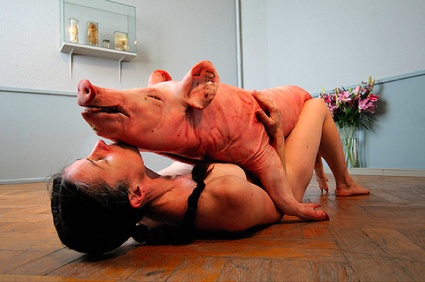
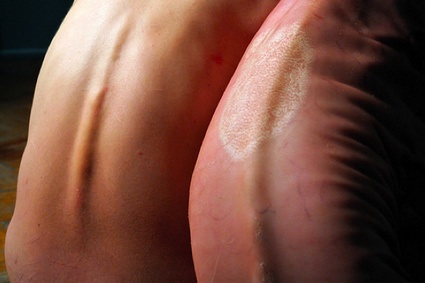 Kira O’Reilly, inthewrongplaceness, 2009. Performance for the opening of sk-interfaces at Casino Luxembourg. Photo credit: Axel Heise
Kira O’Reilly, inthewrongplaceness, 2009. Performance for the opening of sk-interfaces at Casino Luxembourg. Photo credit: Axel Heise
inthewrongplaceness is an intimate performance that Kira O’Reilly developed on her return from a residency at SymbioticA in 2004. The impact of working with pig’s tissue in a lab setting instigated her thoughts on the similarities between the pig’s skin and her own. By inviting members of the audience to approach one by one and touch both her own and the skin of a dead, nonhuman animal, O’Reilly encourages visitors to engage with the complexities of the relationships between skin, touch and species. The artist also explained in an interview: It was also very much influenced by a book called Pig Tales by Marie Darrieussecq, about a woman who turns into a pig. She spends quite some time in the middle of the text oscillating through in between stages, neither entirely one nor the other.
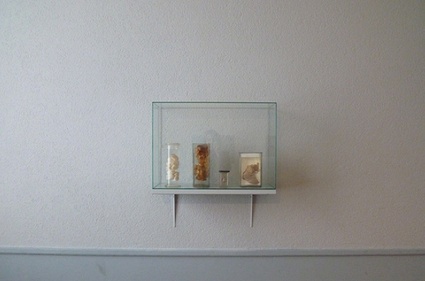
I didn’t see the performance but it seems that it took place in a room that is part of the exhibition. On the walls and on the floor are props such as flowers, taxidermied birds and corpses of small animals in formalin.
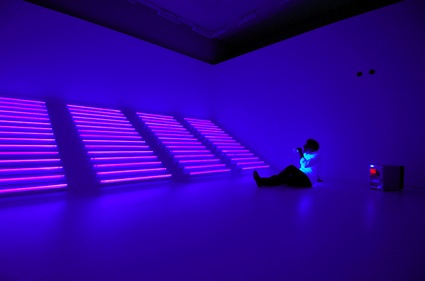 Philippe Rahm, Plage d’Hiver, 2008. Installation view at Casino Luxembourg. Photo credit: Axel Heise
Philippe Rahm, Plage d’Hiver, 2008. Installation view at Casino Luxembourg. Photo credit: Axel Heise
Philippe Rahm does the usual Philippe Rahm and, on a cold, grey day like the ones we are going through this month, we can only thank him for that.
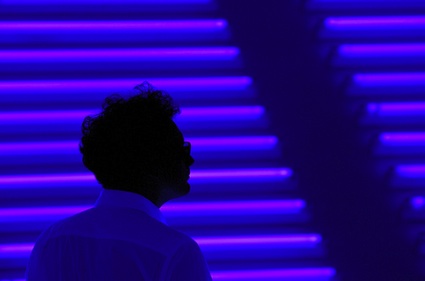 Philippe Rahm, Plage d’Hiver, 2008. Installation view at Casino Luxembourg. Photo credit: Axel Heise
Philippe Rahm, Plage d’Hiver, 2008. Installation view at Casino Luxembourg. Photo credit: Axel Heise
Plage d’hiver (“winter beach”) grabs all our senses with a physiological reconstruction of a beach. A skyline of ultraviolet light along with the dark glasses visitors are recommended to wear upon entering the ‘beach room’ and a cloud of iodine project our body to another latitude, another a season. We breathe the effluvium of the marine aerosol and our skin reacts to the UV-a rays. Rahm has reproduced the angle of sight corresponding to the reflection of sunlight on water which reaches the retina from below as if in duplicate.
Plage d’hiver translates the ubiquity typical of modernity, where seasons are adrift all year long, to the point of overlap in a sort of perpetual spring; a modernity where night and day merge in a white luminous light, diurnal and nocturnal alike, and where distances are reduced until they, too, overlap with the immediacy of globalization.
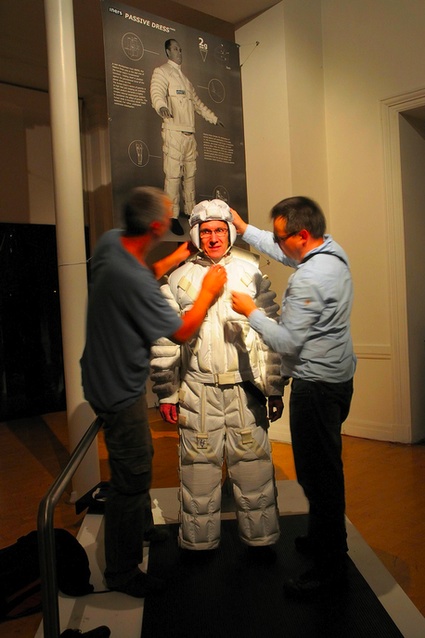 Antal Lakner, Passive Dress -Double Gravity Suit, 2004. Installation view at Casino Luxembourg. Copyright: Axel Heise
Antal Lakner, Passive Dress -Double Gravity Suit, 2004. Installation view at Casino Luxembourg. Copyright: Axel Heise
Antal Lakner’s Passive Dress – Double Gravity Suit is a suit ergonomically fitted with weights that make its wearer perceive 1.5-2 times the normal earthly gravitation weight. The mere attempt to keep a normal posture, to stabilize the body or make small gestures becomes a slow-motion meaningless fatigue. The suit challenges men to maintain one of its unique characteristics: we are indeed the only ones among the vertebrates in having a completely erect posture.
I’ll end with a couple of images with my favourite artwork in the show: the Roadkill Coat that the members of Art Orienté Objet stitched using the fur of small animals they found dead by highways.
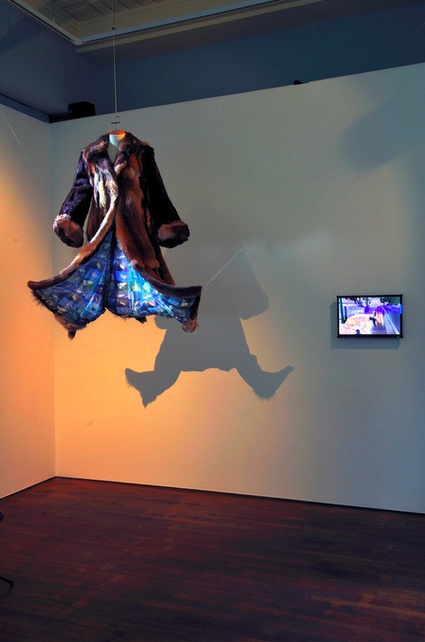 Art Orienté Objet, Roadkill Coat, 2000. Installation view at Casino Luxembourg. Photo credit: Axel Heise
Art Orienté Objet, Roadkill Coat, 2000. Installation view at Casino Luxembourg. Photo credit: Axel Heise
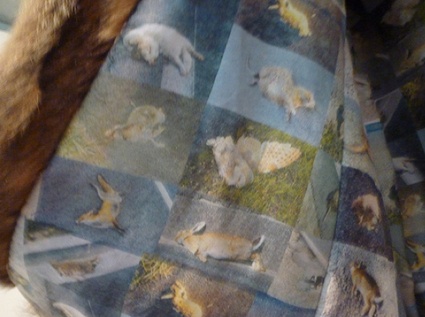 Art Orienté Objet, Roadkill Coat, 2000 (detail)
Art Orienté Objet, Roadkill Coat, 2000 (detail)
sk-interfaces. Exploding Borders in Art, Technology and Society is on view at Casino Luxembourg – Forum d’art contemporain until 10 January 2010. Photo on the homepage: Axel Heise.
Previously: sk-interfaces conference talks on FACT archive and Sk-interfaces (Part 1).

